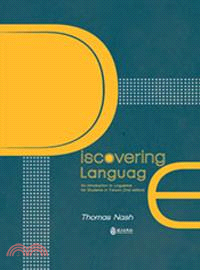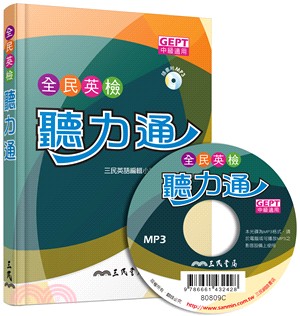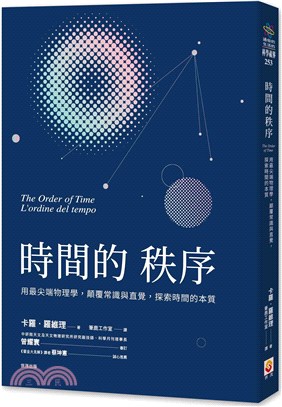Discovering language:an introduction to linguistics for students in Taiwan
商品資訊
定價
:NT$ 300 元優惠價
:85 折 255 元
領券後再享89折起
領
團購優惠券A
8本以上且滿1500元
再享89折,單本省下28元
再享89折,單本省下28元
領
無庫存,下單後進貨(採購期約4~10個工作天)
可得紅利積點:7 點
相關商品
商品簡介
作者簡介
目次
商品簡介
Discovering Language is designed for an introductory linguistics course at college and university level in Taiwan. The book aims to challenge students and stimulate their interest in the nature of language and how it fits into their lives, opening their eyes to their own beliefs about language. It is shorter and easier to read than most linguistics textbooks, with much more content related directly to the lives of students in Taiwan, such as examples from Mandarin, Taiwanese and an indigenous Austronesian language. Review questions allow students to check on their learning, while classroom-tested activities give them opportunities to apply and consolidate what they have studied. Material for small-group projects in which students observe some aspect of language directly is also included.
作者簡介
Thomas Nash
Thomas Nash taught in the Department of English Language and Literature, Fu Jen Catholic University, from 1983 to 2009. He served as department head from 1993 to 1999 and taught introductory linguistics as well as a range of courses in applied linguistics and English. He has degrees in anthropology and language teaching and learning from Humboldt State, California, and the University of Hawaii-Manoa. He now works as an editor and translator.
Thomas Nash taught in the Department of English Language and Literature, Fu Jen Catholic University, from 1983 to 2009. He served as department head from 1993 to 1999 and taught introductory linguistics as well as a range of courses in applied linguistics and English. He has degrees in anthropology and language teaching and learning from Humboldt State, California, and the University of Hawaii-Manoa. He now works as an editor and translator.
目次
Chapter 1 – What Are We Talking About?
PROPERTIES OF LANGUAGE
Displacement
A Series of Levels
Productivity
Conventionality
Discreteness and Contrasts
Social Behavior and Cultural Transmission
Change
Gesture
WHAT ARE WE GOING TO STUDY?
PRACTICAL USES OF LINGUISTICS
THE PRESENTATION OF LINGUISTIC EXAMPLES
SUMMARY: What Are We Talking About?
ACTIVITIES
Chapter 2 – Psycholinguistics
FOUR PRESSURES ON LANGUAGE
Be Clear
Be Processible
Be Quick and Easy
Be Expressive
UNIVERSAL OPERATING PRINCIPLES
A. Pay attention to the ends of words
B. There are elements of language, grammatical markers, which show the relations
between words
C. Avoid exceptions
D. Basic elements of meaning should be marked openly and clearly
E. The use of grammatical markers should make sense
GRAMMAR GROWS
COMPREHENSION OF SPEECH
SPEECH PRODUCTION
GESTURE
SUMMARY: Psycholinguistics
ACTIVITIES
Chapter 3 – Sociolinguistics
THE SOCIOLINGUISTIC VIEW
MUTUAL INTELLIGIBILITY
VARIETIES OF LANGUAGE
LANGUAGE AND SOCIAL GENDER
POLITENESS
A Cross-cultural Comparison
Compliments
SUMMARY: Sociolinguistics
ACTIVITIES
Your Language(s)
Chapter 4 – Phonetics and Phonology
PHONETICS
Consonants
Vowels
Syllables
Suprasegmentals: Elements of Sound that Interact with Syllables and Longer Units
PHONOLOGY
Interaction between Phonology and Other Parts of Grammar
SUMMARY: Phonetics and phonology
ACTIVITIES
Chapter 5 – Morphology
BASIC CONCEPTS
DERIVATIONAL MORPHOLOGY
INFLECTIONAL MORPHOLOGY
Inflections on Nouns
Inflections on Verbs
Agreement and Government
Types of Inflectional Morphology
Mapping
INTERACTION BETWEEN MORPHOLOGY AND PHONOLOGY
WORDS THAT GO TOGETHER: COLLOCATIONS
SUMMARY: Morphology
ACTIVITIES
Chapter 6 – Syntax
WORD CLASSES
Nouns
Verbs
Adjectives
Adverbs
Adpositions
PHRASES AND HEADS
Head-initial and Head-final Languages
Head-marking and Dependent-marking
CLAUSES AND SENTENCES
Other Ways of Creating Complex Sentences
CONSTITUENTS
SYNTACTIC RELATIONS
SYNTACTIC PROCESSES
The Passive
The Causative
Other Processes
SUMMARY: Syntax
ACTIVITIES
Chapter 7 – Semantics, Pragmatics, and Discourse
THOUGHT
MAPPING MEANING ONTO LANGUAGE
WORD MEANING
Features
FROM WORDS TO LONGER EXPRESSIONS
Prototypes, Stereotypes, and Relational Meaning
Reference and Sense
PRAGMATICS AND DISCOURSE
MARKEDNESS
SUMMARY: Semantics, Pragmatics, & Discourse
ACTIVITIES
Chapter 8 – Language Change
SOUND CHANGE
MORPHOLOGICAL AND SYNTACTIC CHANGE
WORD CHANGE
HISTORICAL LINGUISTICS
SUMMARY: Language Change
ACTIVITIES
Chapter 9 – Writing and Language
TYPES OF WRITING SYSTEMS
Morphosyllabary
Syllabary
Abjad
Alphabet
Abugida
HangulHOW WRITING REPRESENTS LANGUAGE
DIFFERENCES BETWEEN WRITING AND LANGUAGE AND SPEECH
Writing Systems, Scripts, and Orthographies
Rate of Change
Physical Existence
Features of Writing Unrelated to Speech
Social Aspects
Dependence on Technology
SUMMARY: Writing and Language
ACTIVITIES
Review Questions on Each Chapter
Project Descriptions
References
Index
PROPERTIES OF LANGUAGE
Displacement
A Series of Levels
Productivity
Conventionality
Discreteness and Contrasts
Social Behavior and Cultural Transmission
Change
Gesture
WHAT ARE WE GOING TO STUDY?
PRACTICAL USES OF LINGUISTICS
THE PRESENTATION OF LINGUISTIC EXAMPLES
SUMMARY: What Are We Talking About?
ACTIVITIES
Chapter 2 – Psycholinguistics
FOUR PRESSURES ON LANGUAGE
Be Clear
Be Processible
Be Quick and Easy
Be Expressive
UNIVERSAL OPERATING PRINCIPLES
A. Pay attention to the ends of words
B. There are elements of language, grammatical markers, which show the relations
between words
C. Avoid exceptions
D. Basic elements of meaning should be marked openly and clearly
E. The use of grammatical markers should make sense
GRAMMAR GROWS
COMPREHENSION OF SPEECH
SPEECH PRODUCTION
GESTURE
SUMMARY: Psycholinguistics
ACTIVITIES
Chapter 3 – Sociolinguistics
THE SOCIOLINGUISTIC VIEW
MUTUAL INTELLIGIBILITY
VARIETIES OF LANGUAGE
LANGUAGE AND SOCIAL GENDER
POLITENESS
A Cross-cultural Comparison
Compliments
SUMMARY: Sociolinguistics
ACTIVITIES
Your Language(s)
Chapter 4 – Phonetics and Phonology
PHONETICS
Consonants
Vowels
Syllables
Suprasegmentals: Elements of Sound that Interact with Syllables and Longer Units
PHONOLOGY
Interaction between Phonology and Other Parts of Grammar
SUMMARY: Phonetics and phonology
ACTIVITIES
Chapter 5 – Morphology
BASIC CONCEPTS
DERIVATIONAL MORPHOLOGY
INFLECTIONAL MORPHOLOGY
Inflections on Nouns
Inflections on Verbs
Agreement and Government
Types of Inflectional Morphology
Mapping
INTERACTION BETWEEN MORPHOLOGY AND PHONOLOGY
WORDS THAT GO TOGETHER: COLLOCATIONS
SUMMARY: Morphology
ACTIVITIES
Chapter 6 – Syntax
WORD CLASSES
Nouns
Verbs
Adjectives
Adverbs
Adpositions
PHRASES AND HEADS
Head-initial and Head-final Languages
Head-marking and Dependent-marking
CLAUSES AND SENTENCES
Other Ways of Creating Complex Sentences
CONSTITUENTS
SYNTACTIC RELATIONS
SYNTACTIC PROCESSES
The Passive
The Causative
Other Processes
SUMMARY: Syntax
ACTIVITIES
Chapter 7 – Semantics, Pragmatics, and Discourse
THOUGHT
MAPPING MEANING ONTO LANGUAGE
WORD MEANING
Features
FROM WORDS TO LONGER EXPRESSIONS
Prototypes, Stereotypes, and Relational Meaning
Reference and Sense
PRAGMATICS AND DISCOURSE
MARKEDNESS
SUMMARY: Semantics, Pragmatics, & Discourse
ACTIVITIES
Chapter 8 – Language Change
SOUND CHANGE
MORPHOLOGICAL AND SYNTACTIC CHANGE
WORD CHANGE
HISTORICAL LINGUISTICS
SUMMARY: Language Change
ACTIVITIES
Chapter 9 – Writing and Language
TYPES OF WRITING SYSTEMS
Morphosyllabary
Syllabary
Abjad
Alphabet
Abugida
HangulHOW WRITING REPRESENTS LANGUAGE
DIFFERENCES BETWEEN WRITING AND LANGUAGE AND SPEECH
Writing Systems, Scripts, and Orthographies
Rate of Change
Physical Existence
Features of Writing Unrelated to Speech
Social Aspects
Dependence on Technology
SUMMARY: Writing and Language
ACTIVITIES
Review Questions on Each Chapter
Project Descriptions
References
Index
主題書展
更多
主題書展
更多書展本週66折
您曾經瀏覽過的商品
購物須知
為了保護您的權益,「三民網路書店」提供會員七日商品鑑賞期(收到商品為起始日)。
若要辦理退貨,請在商品鑑賞期內寄回,且商品必須是全新狀態與完整包裝(商品、附件、發票、隨貨贈品等)否則恕不接受退貨。

























